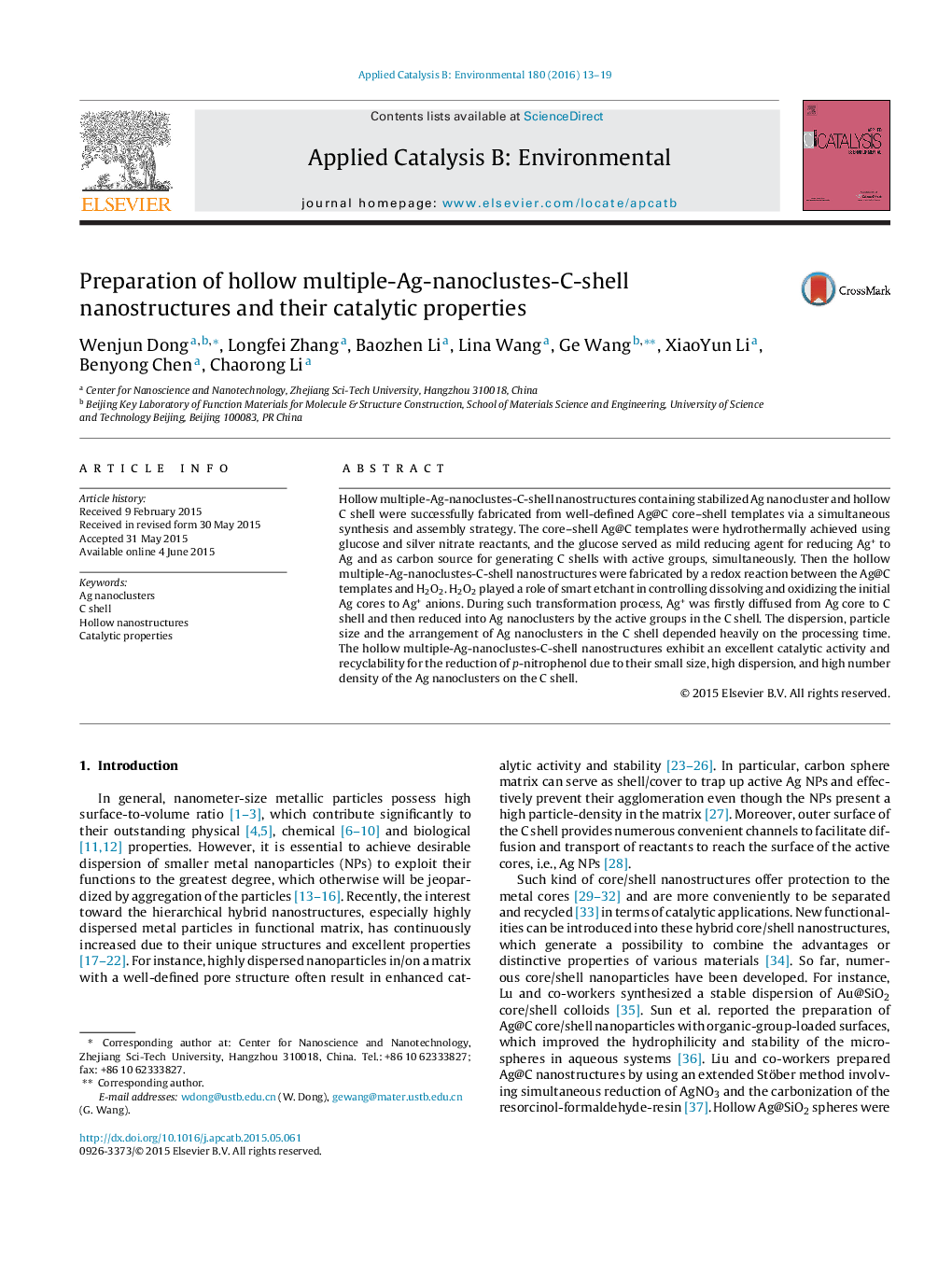| Article ID | Journal | Published Year | Pages | File Type |
|---|---|---|---|---|
| 45215 | Applied Catalysis B: Environmental | 2016 | 7 Pages |
•The hollow multiple-core–shell nanostructures were fabricated via a simultaneous synthesis and assembly strategy.•The dispersion, particle size of Ag nanoclusters and the arrangement in/on the carbon shell can be controlled.•The hollow multiple-Ag-nanoclusters-C-shell nanostructures exhibited excellent catalytic activity.
Hollow multiple-Ag-nanoclustes-C-shell nanostructures containing stabilized Ag nanocluster and hollow C shell were successfully fabricated from well-defined Ag@C core–shell templates via a simultaneous synthesis and assembly strategy. The core–shell Ag@C templates were hydrothermally achieved using glucose and silver nitrate reactants, and the glucose served as mild reducing agent for reducing Ag+ to Ag and as carbon source for generating C shells with active groups, simultaneously. Then the hollow multiple-Ag-nanoclustes-C-shell nanostructures were fabricated by a redox reaction between the Ag@C templates and H2O2. H2O2 played a role of smart etchant in controlling dissolving and oxidizing the initial Ag cores to Ag+ anions. During such transformation process, Ag+ was firstly diffused from Ag core to C shell and then reduced into Ag nanoclusters by the active groups in the C shell. The dispersion, particle size and the arrangement of Ag nanoclusters in the C shell depended heavily on the processing time. The hollow multiple-Ag-nanoclustes-C-shell nanostructures exhibit an excellent catalytic activity and recyclability for the reduction of p-nitrophenol due to their small size, high dispersion, and high number density of the Ag nanoclusters on the C shell.
Graphical abstractFigure optionsDownload full-size imageDownload as PowerPoint slide
